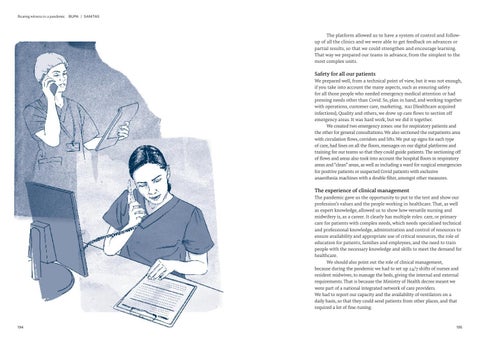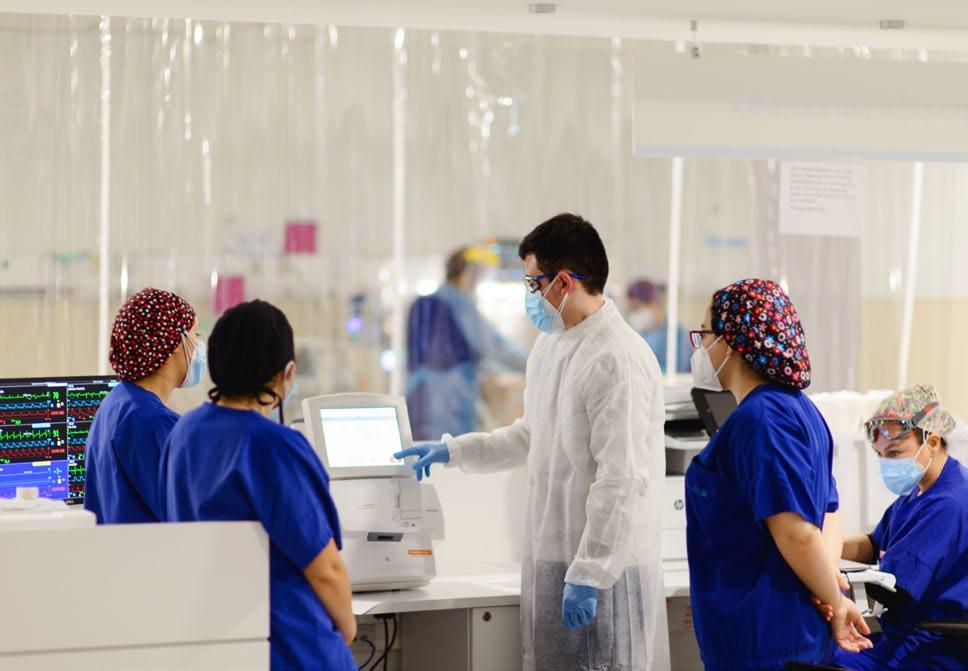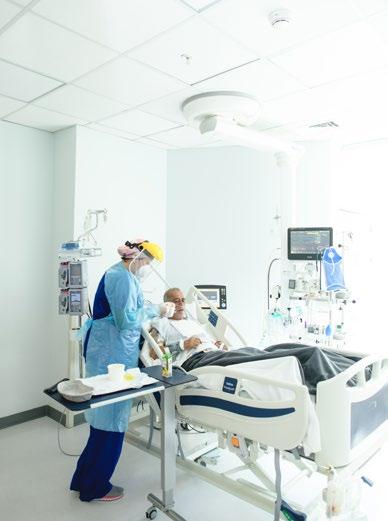Bearing witness to a pandemic BUPA | SANITAS
The platform allowed us to have a system of control and followup of all the clinics and we were able to get feedback on advances or partial results, so that we could strengthen and encourage learning. That way we prepared our teams in advance, from the simplest to the most complex units.
Safety for all our patients
We prepared well, from a technical point of view, but it was not enough, if you take into account the many aspects, such as ensuring safety for all those people who needed emergency medical attention or had pressing needs other than Covid. So, plan in hand, and working together with operations, customer care, marketing, hai (Healthcare acquired infections), Quality and others, we drew up care flows to section off emergency areas. It was hard work, but we did it together. We created two emergency zones: one for respiratory patients and the other for general consultations. We also sectioned the outpatients area with circulation flows, corridors and lifts. We put up signs for each type of care, had lines on all the floors, messages on our digital platforms and training for our teams so that they could guide patients. The sectioning off of flows and areas also took into account the hospital floors in respiratory areas and “clean” areas, as well as including a ward for surgical emergencies for positive patients or suspected Covid patients with exclusive anaesthesia machines with a double filter, amongst other measures.
The experience of clinical management
The pandemic gave us the opportunity to put to the test and show our profession’s values and the people working in healthcare. That, as well as expert knowledge, allowed us to show how versatile nursing and midwifery is, as a career. It clearly has multiple roles: care, or primary care for patients with complex needs, which needs specialised technical and professional knowledge, administration and control of resources to ensure availability and appropriate use of critical resources, the role of education for patients, families and employees, and the need to train people with the necessary knowledge and skills to meet the demand for healthcare. We should also point out the role of clinical management, because during the pandemic we had to set up 24/7 shifts of nurses and resident midwives, to manage the beds, giving the internal and external requirements. That is because the Ministry of Health decree meant we were part of a national integrated network of care providers. We had to report our capacity and the availability of ventilators on a daily basis, so that they could send patients from other places, and that required a lot of fine-tuning.
194
195






















































